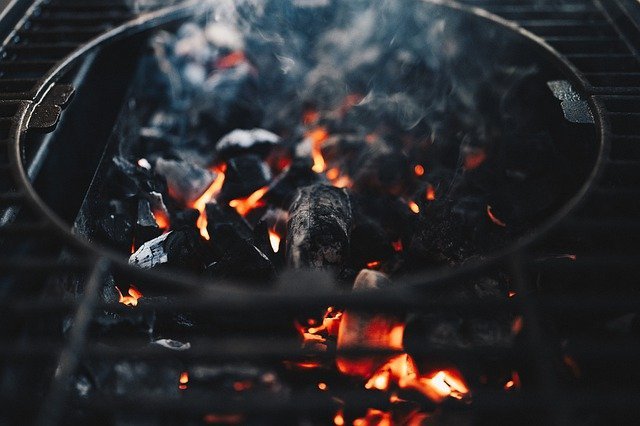Are Meat Thermometers Safe for Other Foods?
Many chefs who want to reach a high level of accuracy in their food, whether they are preparing steaks or creating sweets, have a meat thermometer in their kitchen drawers at all times. Meat thermometers are an excellent tool for obtaining accurate temperature readings of food items.
Despite the fact that they are referred to as meat thermometers, they are not limited to the measurement of the temperature of steaks.
They may be used in a variety of various situations in the kitchen, such as when you need to take a precise temperature reading of anything.
Many people wish to use meat thermometers to monitor the temperature of water, whether it’s for poaching an egg or bathing a child in warm water. However, they are unsure whether they will be able to.
Here are some tips for the most effective usage of meat thermometers in water, as well as some alternatives if you don’t have a meat thermometer laying around.
What Is the Function of a Meat Thermometer?
When a meat thermometer is purchased, the probe is long enough to allow the thermometer to be placed straight into the piece of meat being measured. The probe detects the interior temperature of the meat, which may be used to determine whether or not the dish is cooked more accurately than if you just eyeballed the meat from the outside of the oven.
Meat thermometers are available in both digital and analog versions. The most sophisticated models contain settings that indicate at what temperature a particular sort of meat is safe to consume. Alternatively, they may be put into meat, such as a roasting turkey, and will pop out when the meat is done.
A simple meat thermometer is sufficient for determining when a meal is done, despite the fact that it lacks the bells and whistles of more elaborate models.
When Should a Meat Thermometer Be Used?
Meat thermometers are most typically used by cooks to determine whether a thick piece of meat is ready to be served to guests. Undercooked meat may cause significant illness, thus it must be cooked to a certain temperature, which varies depending on the kind of meat, in order to destroy all of the germs present in the flesh.
Nonetheless, it might be difficult to determine whether or not the meat has achieved that temperature just by looking at it from the exterior, especially if you are cooking a thicker piece of meat.
Some people depend on the color of the meat to determine whether it has been properly cooked or not. However, occasionally meat may seem brown because it has been sitting in the refrigerator for an excessive amount of time or because of a problem with its storage, giving the misleading impression that it is cooked when it is really still a little raw.
For best results, place the probe of a meat thermometer into the thickest section of the flesh and wait a few seconds before taking the reading. The temperature reading will then inform you whether it needs to be cooked for a few more minutes or if it is finished.
You may also purchase meat thermometers that will remain in the meat during the whole cooking process. You will just have to check the temperature reading every once in a while until it reaches the temperature you wish.
Are Meat Thermometers Safe for Other Foods?
Using a Meat Thermometer to Check the Temperature for Water
When it comes to cooking, the title “meat thermometer” is a bit of a misnomer since this versatile kitchen gadget can be used to monitor the temperature of many other sorts of food as well. It may be used to verify that leftovers have been sufficiently heated or even to monitor the temperature of water.
In order to check the temperature of water with a meat thermometer, just place the thermometer’s probe into a pot of water and wait a few seconds for the final temperature reading.
Food Thermometers from Other Manufacturers
Alternatively, if you don’t have a meat thermometer, you may use another form of thermometer to get an accurate measurement of the temperature of your water.
A sort of all-purpose food thermometer, instant-read thermometers are put into the meal for a few seconds before they get an accurate measurement of the internal temperature. They vary from meat thermometers in that they are typically smaller and cannot be left in the oven during the cooking procedure.
Temperature thermometers for candy and deep-frying are another choice for determining the temperature of your water. In general, they read higher temperatures than meat thermometers and may be clipped to the edge of your pot for easy access. In contrast to meat thermometers, most digital thermometers do not come with a probe, therefore you will not be able to use them for your roast turkey.
You may always approximate the temperature of the water by observing its behavior and waiting for it to boil if you do not have access to a kitchen thermometer of any type. Though less exact than using a thermometer, this has been the way our forefathers cooked for hundreds of years, and they were successful in heating water.
The use of a digital thermometer intended for taking body temperature for the purpose of measuring water is, however, strictly prohibited. Body heat is measured by those thermometers, which are designed to operate at a temperature that is lower than the boiling point of water. If you place it in a kettle of boiling water, it may break and cause significant injury to someone nearby.
Exactly when should you take the temperature of water?
Although you can generally determine by looking at a pot of water whether or not it is hot enough for your purposes, there are several situations in which it may be beneficial to get an exact temperature measurement.
While it comes to steeping tea leaves, serious tea connoisseurs want to attain exact temperatures when heating water. This is due to the fact that various types of tea need varying steeping temperatures in order to develop their greatest tastes.
In addition to checking the temperature of meat, a meat thermometer may be used to monitor the temperature of other liquids, such as coffee. So that you can detect whether your drink is excessively hot before you burn the roof of your mouth, this method is recommended.
It is not always enough to simply boil water while cooking; certain recipes need water to be boiled to a precise temperature before they can be prepared. Several chefs advocate boiling water to a certain temperature for poaching eggs if you want your eggs to have that beautiful pillowy feel. This is critical for the destruction of germs in eggs as well as the proper response that poaches eggs rather than boiling or steaming them.
In addition to its usage in the kitchen, accurate water temperature readings have applications outside of the kitchen. If you are preparing a bath for a baby, it is important to check the temperature of the water to ensure that your infant is not in danger. If you have a baby, food thermometers are quite handy since they can be used to monitor the temperature of baby formula or reheated breast milk.
Concluding Remarks
A meat thermometer is a cooking equipment that every serious home chef should have in their arsenal. The ability to avoid overcooking or undercooking when cooking various cuts of meat is essential for guaranteeing food safety as well as flavor when cooking different cuts of meat.
Meat thermometers, on the other hand, may be used for a variety of different cuisines. You may, for example, use them to check the temperature of boiling water before using it.
Simply submerge the probe of a meat thermometer into water and wait a few seconds to get an accurate temperature reading from the thermometer. A candy thermometer, for example, is a good choice if you want to use a thermometer that you can keep in the pot all the time.
Rather of testing the temperature of your water exactly, you may get away with estimating the temperature most of the time.
The usage of an exact temperature measurement is required for particular applications such as making tea, poaching eggs, or even preparing a baby’s bath, among other things.





